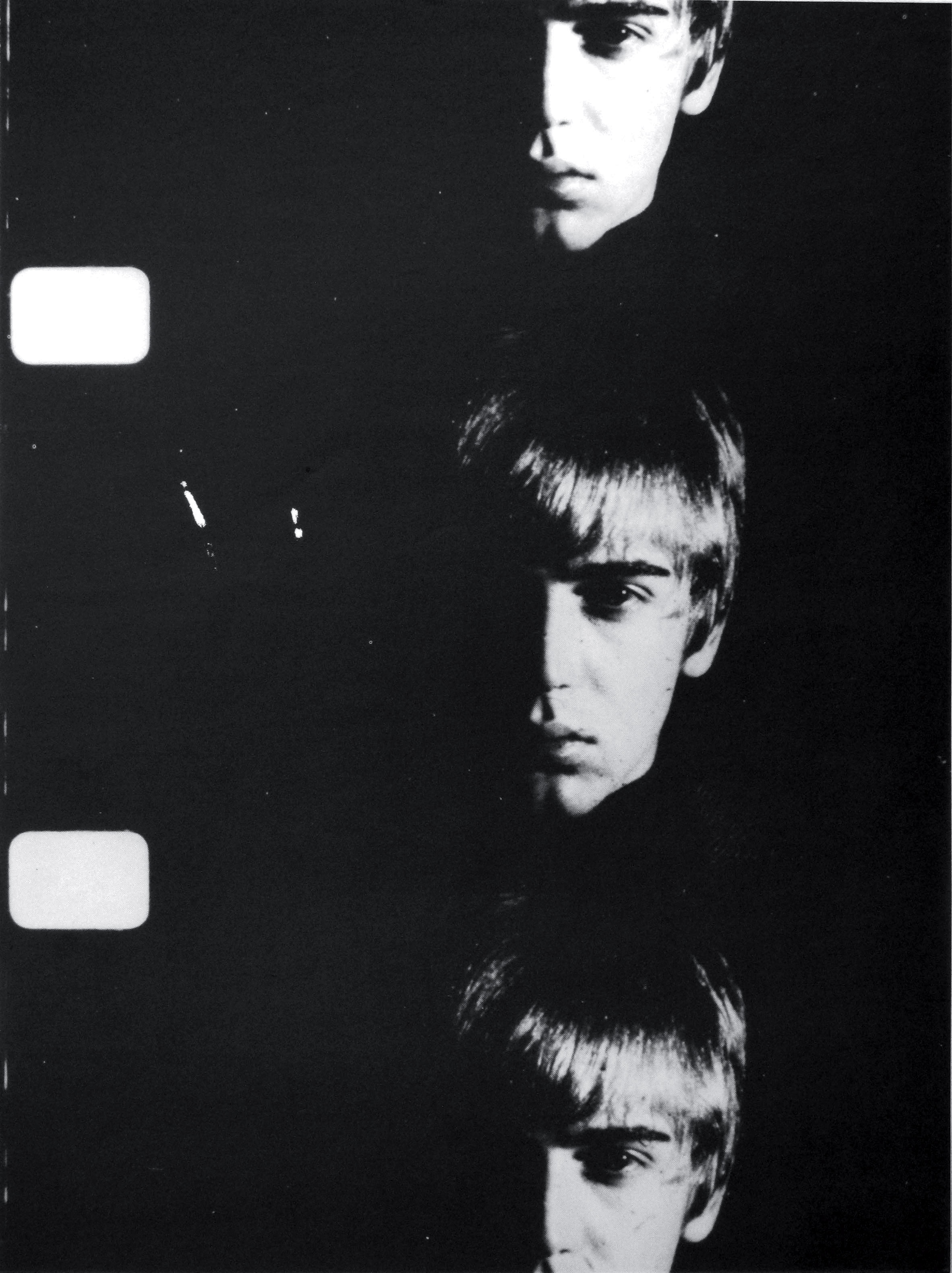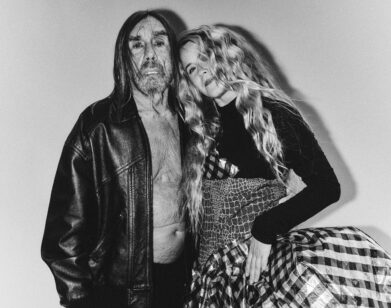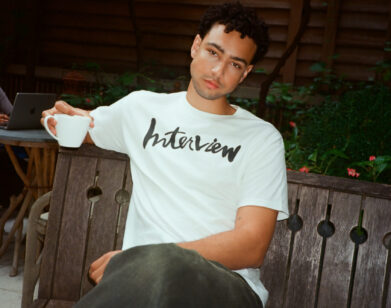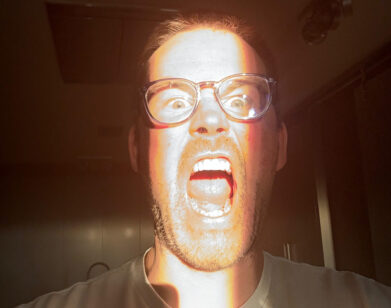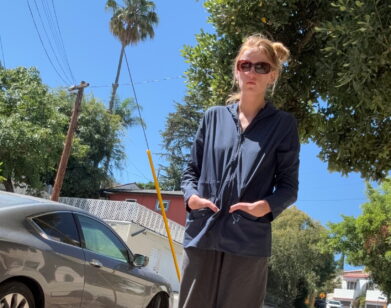Factory Workers Warholites Remember: Rene Ricard
Although he acted in only two Warhol films, Rene Ricard was one of Andy’s most brilliant superstars. As an actor he’s best known for his role in Eric Mitchell’s Underground U.S.A. Ricard is an acclaimed poet with numerous books in print, and an extraordinary painter. He was interviewed by Vito Schnabel who recently curated a show of Ricard’s paintings in London.
VITO SCHNABEL: When did you first meet Andy Warhol?
RENE RICARD: That’s the wrong story. To support myself as a kid, I was a model at art schools around Boston. When I stopped working at 2 P.M., I’d walk up Newbury Steet, which is where the art galleries were. One day, I was at a gallery run by a friend and she said, “Rene, there’s something you’ve got to see over at the Institute of Contemporary Art.” I walked in, and there was a painting by Andy Warhol, the flower painting. It was orange, yellow, fuchsia, red, and green, and it looked enormous. Paintings weren’t that big at that time — this was ’64 — and, while looking at it, I evolved a theory about it. Andy had made a painting that was essentially flawless, but it was an actual painting. So he had this green background, and orange, yellow, fuchsia spots which were kind of pushing forward — they looked like they popped. I had never seen anything like it. I was in a trance. The guard tapped me on the shoulder and said, “Excuse me, but the gallery’s been closed half an hour.” I completely planned out my life looking at that painting.
SCHNABEL: Had you known of Warhol in Boston?
RICARD: There was an article in Life magazine with a photograph of Andy lying on a Hollywood modern couch at The Factory. Now, Truman Capote’s first novel came out with a picture just like that. It was the gayest picture you ever saw. Andy imitated that pose for Life. When I saw that Andy Warhol picture, I knew I would get a good reception.
SCHNABEL: Is that when you moved to New York?
RICARD: A sudden a friend gave up an apartment on 6th Street. It was $45 a month, and it had a sectional burgundy-velvet deco couch. I ran into the artist Al Hansen on the street and I said, “How do you know Andy Warhol?”He said, “Just go up there! He’s a really nice guy!” He gave me the address and explained how to use the elevator. I just walked in to Andy Warhol, Chuck Wein, Edie Sedgwick, and Billy Linich..
SCHNABEL: Did you introduce yourself?
RICARD: Yeah. I said, “I’m from Boston,” and Andy said, “Oh, Edie’s from Boston!” I didn’t know who Edie Sedgwick was, and she had on these long earrings which she got on Bleecker Street, a striped shirt just like Andy’s, black tights, and high heels. Girls didn’t really wear high heels then. It was really weird. And she had this short hair and she kept applying this conditioner called Flex, and she was writing a letter. I was really scared. He liked me. It turns out I was his type.
SCHNABEL: You appeared in a Warhol film, The Andy Warhol Story [1967], in which you played Andy. Where was it shot?
RICARD: It was shot at Buddy Wirtshafter’s loft on Prince Street in his kitchen. I remember asking Andy, “Well, what should I wear?” He said, “It’s a black and white movie so you better wear black and white.” Warhol destroyed my first love affair because the night we filmed Kitchen there was
an opening at the Museum of Modern Art, and Andy took me and Edie Sedgwick. Then we all piled into Edie’s car and went to the Dakota — even I knew about the Dakota. When I finally got home to my boyfriend, who I didn’t realize was insanely jealous, I told him where I’d been and
he said he had slept with a boy he met on the bus. That was the end of it.
SCHNABEL: Was he as beautiful as you are?
RICARD: Nobody’s that beautiful. You don’t know how pretty you are when you’re young. Just being young is beautiful. And I was astonishingly pretty — you know, very skinny.
SCHNABEL: Did you feel like you had a part in the Factory right away?
RICARD: Nobody had a part in the Factory. I had a part in Andy’s life; the Factory was a vicious cabal of warring factions. The Factory was extremely cold, and I got in a lot of trouble at the time. First, Danny Williams was at the Factory and Paul Morrissey did the camera work on Kitchen, that was his first entrée. He was coming in as a technician, and he was a filmmaker himself. We ran out of film, and everyone was packing up. Danny Williams was supposed to pack up the film but he forgot it. Paul went instead, got the film, and that was the beginning of Paul Morrissey. Danny Williams, who was fired — a week later they found his car parked by a reservoir in Massachusetts, and he had drowned himself. As I said, the Factory was a cold, frightening, forbidding place. I mean, it was all silver! It was frigid. What I remember is the toilet door had a life-sized picture of Paul Anka, and someone had shoved a banana in his fly. That’s the toilet where Ondine shot up Judy Garland, who said, “I’ll take anything to be with people.” I remember all of these people standing there, and nothing happening. This was a typical Factory business meeting.
SCHNABEL: Did Andy do drugs?
RICARD: No. Andy didn’t do drugs. He didn’t have sex. Of course, he did drugs! Of course, he had sex! Andy was addicted to Obetrol, a speed pill. He would give it to us when he wanted us to talk in the movies. I had a funny reaction to it. One night, there was a movie at Tiger Morse’s store, Kaleidoscope, Andy said, “Oh, Rene, you’re so good tonight. Let’s do another movie.” He gave me another pill. And he said, “Let’s do Andy Warhol’s Life Story.” We did it at Robert Arkin’s apartment on Fifth Avenue. But by then I was so high, I couldn’t talk. I played Andy Warhol in the Andy Warhol Life Story and Edie Sedgwick played herself. But the soundtrack came out blip, blip, blip. It was very clever of Andy to make out like he didn’t have sex. Homosexuality was very threatening to people. Andy was really smart. And really insecure.
SCHNABEL: People said he always thought of himself as really ugly.
Andy didn’t do drugs. He didn’t have sex. Of course, he did drugs! Of course, he had sex! rene ricard
RICARD: Yes, and he was ugly. He became much more conceivable as he got older. He got cute after the shooting. I arrived there three minutes after he was shot. Paul Morrissey was standing in front of the elevator, and he said, “A terrible thing happened.” By the time I got downstairs the news people were already there. I was kidnapped the day Andy was shot. Drugged and taken to Florida by Vera Cruz. She was running stolen XKE’s. She gave me a powerful knockout. And I woke up in Georgia, in her car, to the radio saying, Bobby Kennedy has been shot.
SCHNABEL: What was Andy like with his lovers?
RICARD: I wasn’t one, but from what I saw, he was very supportive, very kind. Andy never gave us money but he took us out to eat every night. He’d take the whole Factory to a place called Emilio’s and would be so high on amphetamine that he couldn’t eat. He’d serve himself an olive and cut it into 36 slices with the knife and fork.

